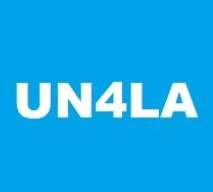UN4LA News - October 2018
A monthly newsletter published by United Neighborhoods for Los Angeles.
UN4LA's mission is to bring communities together to plan for a sustainable future. This city's growth must be shaped by community engagement, not developer dollars.
Contact UN4LA
A monthly newsletter published by United Neighborhoods for Los Angeles.
UN4LA's mission is to bring communities together to plan for a sustainable future. This city's growth must be shaped by community engagement, not developer dollars.
Contact UN4LA
EVER WONDER WHY THERE'S SO MUCH VACANT RETAIL SPACE?
If you've been following development in LA for the last several years, you know that the folks at the Department of City Planning (DCP) are big fans of mixed-use projects. According to them, building residential structures with ground floor retail will encourage people to shop in their own neighborhood and spend less time in their car. And if you've attended any planning hearings at all in recent years you've certainly heard DCP staff extoll the virtues of "walkable, vibrant streets".
But you may have noticed that a lot of these new mixed-use buildings have plenty of vacant commercial space. Could this have anything to do with rapid decline of brick and mortar retail over the past several years? Exacerbating the problem is the fact that many commercial landlords are willing to leave space vacant for months or years in the hope of attracting a major chain willing to pay top dollar. And if these spaces stay empty, that means the city is losing out on valuable revenue from sales tax.
Across the US, local governments are looking for ways to combat this problem. This article from BisNow gives more details.
Fed Up With Vacant Storefronts, Residents Force Cities To Punish Retail Landlords
LET'S NOT HAND CITY HALL A BLANK CHECK
Earlier this year the LA City Council passed a motion to place a meaure on the November ballot asking voters to approve the formation of a municipal bank. Proponents can cite a number of reasons for making such a move. Doing business with private banks can be costly, and many backers want the City to have more control over how taxpayer dollars are invested. But unfortunately, as is often the case in LA, our elected officials haven't undertaken a thorough investigation of what this proposal would involve and only offer the vaguest outline of how the bank might function. And a report by the Chief Legislative Analyst identifies a number of possible problems. Jack Humphreville offers a reality check on CityWatch.
The Bank of Los Angeles: A Weapon of Mass Financial Destruction?
WE NEED TREES AND SIDEWALKS
Recently the City of LA agreed to settle a lawsuit over the condition of its sidewalks by agreeing to spend $1.3 billion over 30 years to repair them. Fixing our sidewalks is important, and UN4LA agrees that this should be a priority. Unfortunately, this program could result in the removal of thousands of trees at a time when our urban forest is under threat from several different directions. UN4LA believes the City needs to complete an Environmental Impact Report before proceeding, in order to look at alternatives to removal and to consider best practices for replacement.
We Need Trees and Sidewalks
CA ATTORNEY GENERAL FAULTS PLANNING COMMISSION FOR APPROVING TOXIC PROJECT
Earlier this year the City Planning Commission (CPC) approved the environmental assessment for a 340,000 sq. ft. distribution center at the corner of Vermont and Redondo in the Harbor Gateway community. This project will generate over 1,300 car trips a day, including hundreds of trips by diesel trucks, and is intended to operate 24/7, yet the CPC turned a deaf ear to residents' concerns about the project's impacts.
But it's not over til it's over. The California Attorney General has written to the LA City Attorney citing numerous problems with the approval, and asks the City to go back and do the job right.
California AG Backs LA Harbor Community Fighting Toxic Project
DO WE REALLY NEED A RAIL LINE TO WEST HOLLYWOOD?
In September the Metropolitan Transportation Authority (MTA) Board voted to spend $400,000 to study extending the Crenshaw/LAX Line (currently under construction) into West Hollywood. The MTA is aggressively pushing to build light rail, but is this approach doing anything to increase transit ridership?
Actually, no. Transit ridership is down about 20% since 2013, in spite of the fact that the MTA has spent billions on building new rail in recent years. Ridership stats for the Red/Purple Line, the Blue Line and the Green Line have all declined in recent years. Rail proponents point out that ridership is up on the Gold and Expo Lines over the past couple of years, but this seems to be the result of significant new extensions for both lines with the addition of several new stops. And total rail ridership for the first half of this year has declined significantly over the same period last year.
So why does the MTA keep forging ahead with new rail projects? A recent article on the West Hollywood line from The Real Deal may offer a clue. "Given the history of past Metro line extensions, a light rail to West Hollywood would likely have a positive impact on residential and commercial real estate values in the enclave." A link to the full article is below.
Big Plan for Rail Line through WeHo Chugs Closer to Reality

